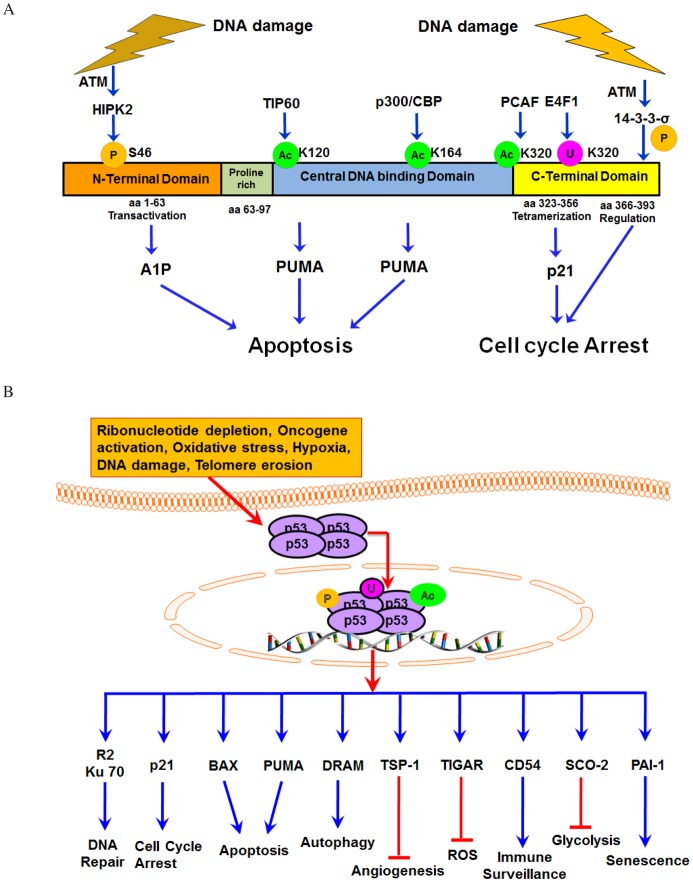Fig. 2. p53, a tumor suppressor.
A: Selective Impact of p53 Modifications. Exemplary post-translational notifications via phosphorylation (P), acetylation (Ac), or ubiquitination (Ub) are depicted, which result in a specific cellular outcome in response to p53 activation and preferential activation of indicated target genes. E4F1 is an atypical ubiquitin ligase that modulates the p53 functions independently of degradation. E4F1-dependent Ub-p53 conjugates are associated with chromatin, and this induces a p53-dependent transcriptional program eliciting cell cycle arrest but not apoptosis. Following ATM activation, 14-3-3-σ is induced, and this causes dephosphorylation of p53 at S-376. HIPK2 induced S46 phosphorylation in p53 is essential for mediating its apoptotic functions. B: p53 contributes to multiple cellular processes in response to various cellular stresses via regulation of downstream targets and/or signaling pathways.

